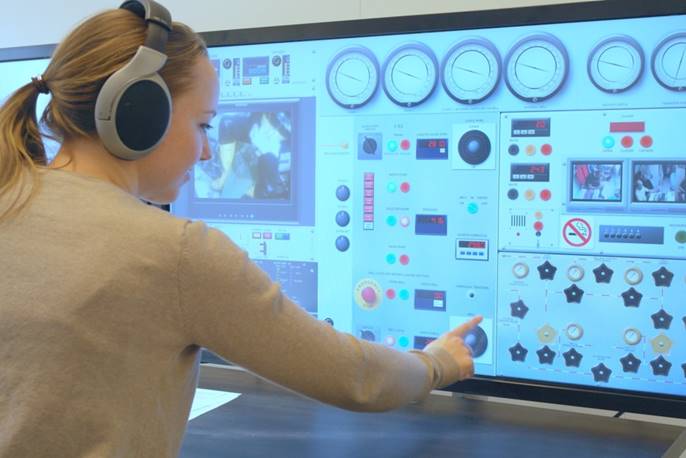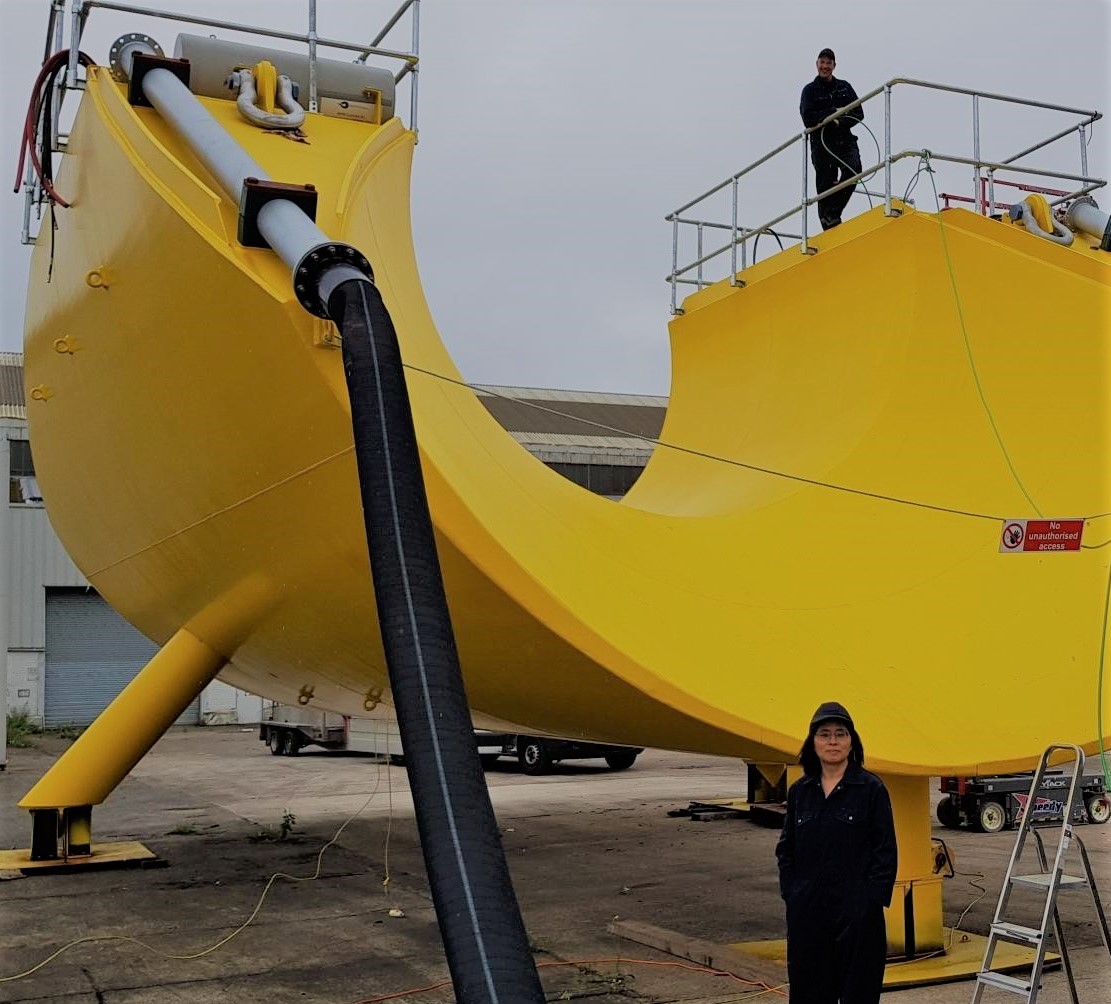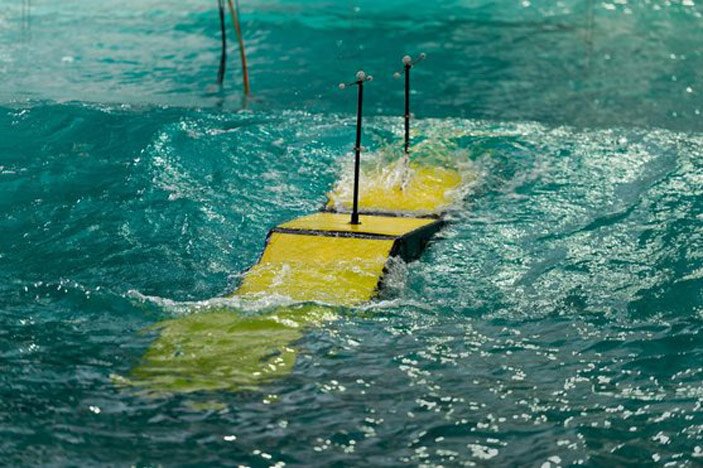E-News September 2018 Edition
Understanding what you're dealing with by David Fraser

As geopolitical adviser and journalist, Joshua Cooper Ramo of Kissinger Associates wrote in The Age of the Unthinkable, "if you are not seeing things properly, you have no hope of any sort of breakthrough." He was referring primarily to awareness of current affairs, but the point applies equally to our understanding of a physical system we wish to control. Unless we can predict how a system will behave under a full range of circumstances, we will have little chance of developing a means of intervening in it to achieve a desired outcome or maintain a particular state of operation. The ability to model a system with the necessary degree of fidelity is, therefore, fundamental to the effective design, development, and commissioning of control systems, particularly those which are to be applied to situations we don't initially understand very well.
The truth is the more you look, the more you see, like looking at the stars. The more time spent studying a system - or systems in general - the more we will be able to make sense of what we see happen - to understand the structure of the issue. Learning from one context reads across to another: Archetypal patterns appear in many guises, both in physical systems and in human systems.
The parallels between controlling physical systems with time-dependent behaviour and influencing human systems like organisations can be striking. In both cases, an ability to predict how things will change through time is essential. If we wish to stimulate change in an organisation, an idea of the time constants with which thinking may evolve from an old way of looking at things to a new one is very helpful in managing, for example, a communication process intended to lead a workforce through a significant change. With an understanding of this kind of dynamic (and what kinds of "noise" might cause difficulty), we can judge how much we need to sustain our communication to bring the "state" of the organisation and its people to the desired place.
Of course, when thinking of the control of physical systems, we may also need to take into account the behaviour of the people involved as they are part of a wider system which must perform in an acceptable manner as a whole.
All-in-all, the ability to understand what you are dealing at a sufficient level of detail and with the right insight is critical to achieving the results you desire. Much of this comes from breadth of experience.
David Fraser, ISC's Non-Executive Chairman
Artificial Intelligence and Control
There are more tasks that must now be performed by machines autonomously with little or no intervention from humans. Artificial Intelligence (AI) provides a framework to organize and design software to undertake such tasks. There is a lot of excitement amongst the leaders of industry in the potential for Artificial Intelligence (AI). This is of course a relatively old topic which has received a new lease of life partly because of applications which need such techniques, and partly because the links with other technologies add significant power and opportunities to the method.
The interest in big data and the importance of new methods of modelling systems and behaviour coincides with the development of the topic. One of the application areas of interest is in automotive autonomous vehicles and there is an obvious opportunity for AI methods. The modelling of systems is also becoming a subject of greater importance because the performance of systems needs to be optimised and because systems are becoming more complex and their behaviour less intuitive. Recent developments in neural networks for more complex systems and in various applications have added excitement to the topic.
What is interesting to the control engineer is the insights AI methods may provide and the benefits that the mathematical understanding of control systems behaviour brings to AI based systems. For example, it is easy to see how AI may be used to help set up and tune simple adaptive controllers and indeed auto-tuning methods have used such approaches over quite a number of years. At the same time, our knowledge of adaptive systems may provide insights into ways AI based algorithms may operate. The computer scientist has less knowledge of topics such as the robustness of systems and uncertainties or indeed the stability of complex interconnected systems. It is hoped that the types of analysis and optimisation tools developed by control engineers may benefit the AI community.
When the industrial control group was set up at the University of Strathclyde under the title of the Industrial Control Centre about 30 years ago a very successful expert systems/AI centre was in development. The Alan Turing Institute was established in 1983 and had about a decade of great success but then the subject waned in popularity. One of the reasons was probably that it was too early for the types of application that really needed the approach. However, it now seems that there are many potential problems where AI based methods may compliment control and systems engineering and allow the subject to take a major leap forward in both applicability and importance. The advice is watch this space and subject.
Multi-Agent Systems
An agent is a computational software system for information processing that can undertake independent action and perceives its environment though sensors. There are two aspects to its operation involving an ability to act and providing assistance where tasks can be delegated. There has been growing interest in the subject of multi-agent systems often driven by the needs of the aerospace and defence community for the control of a squadron of unmanned aerial vehicles (UAV's) or drones. There is also now increasing interest in the latest underwater activities involving underwater drone squadrons. The subject of multi-agent systems depends on a combination of disciplines including mathematics, software engineering, control and signal processing.
Agent-based systems add to the Artificial Intelligence (AI) toolkit by assisting the design and implementation of software systems. Agents are software solutions that act autonomously to solve an increasing number of complex system problems. Applications may require multiple agents cooperating and working together. A multi-agent system is a network of software agents that interact to solve problems that are difficult for an individual agent to solve.
The use of the multi-agent systems for traditional industrial application problems is still to be explored but there are certainly lessons to be learned from the interdisciplinary nature of the approach. The developments in technology due to distributed computing power and the increasing connectivity of devices adds complexity and opportunities for such techniques.
Forthcoming ISC Training Course
Registration is now open for our Control Fundamentals Training Course that will be held on 2nd - 4th October 2018.
This three-day course introduces the basic control engineering concepts in terms of Linear Systems Models, Classical Control Theory and Practical Aspects in Control. The course presents analysis of a linear control system in terms of stability and performance. In addition, Classical Control Method such as PID controller (including tuning methods) and lead-lag compensator are also covered. Significant hands-on examples are used to reinforce the lectures.
This is one of our most popular training courses. It is especially useful to those engineers who may not have had specific control theory teaching during their engineering education. It also provides an excellent refresher course in basic control engineering for practicing engineers. As with all ISC training courses discussions and questions will be encouraged.
Please contact Dr Meghan McGookin for further details.
New Developments in Training Courses
One of the developments over the last few years in the training course offered by the ACTC is the introduction of very detailed modelling, simulation and control design studies. These would often involve a major hands-on during the last days of the course to illustrate the different topics covered in the course. This was particularly welcomed by automotive companies where both diesel and spark ignition engine control problems were employed.
An extension of these ideas is to introduce a major design study which runs throughout the three or four day training event. A popular course on predictive control has involved such a feature and more recently a course on modelling, system identification and control has been developed. This latter course aims to show the difference in approach between using physical system modelling and system identification tools. There are clearly implications for control design because of the different ways of generating such models. One of the major influences is because of the types of uncertainties that are introduced and how this uncertainty can be addressed.
Further details of training courses which can be tailored to companies requirements may be obtained from Dr Meghan McGookin
Tracking Control Problems
Many control applications involve the output following a set-point signal which is often a constant for long periods. However, for some applications tracking controls are required where the output must follow a rapidly changing reference command signal. Predictive control methods are often put forward as a solution for such problems, since they can use future set point information. However, other well-known multivariable control methods can be applied such as linear quadratic Gaussian (LQG), H? or Quantitative Feedback Theory (QFT) design.
To generate an optimal control law a model for the reference or setpoint changes is required. In some situations, the reference is deterministic like a sequence of step signals. For example, in robotics applications a well-defined trajectory is defined. In other problems the reference may change in a random fashion depending upon the reaction of an operator trying to track a target. In this case the form of the reference change cannot be defined beforehand and must be modelled by a stochastic process when obtaining optimal controls. Thus, for the design of an optimal controller the change in the reference can be assumed to vary in a random way which might be modelled by white noise into a linear transfer-function such as an integrator. This is only a model for the way the reference is likely to behave and the actual reference signal that applies is fed into the system in the usual way.
There are various options depending upon the structure of the tracking controller chosen. The usual controller structure where the controller is fed by an error signal is termed a one degree of freedom design, but it is possible to have two channels into the controller for the feedback measurements and for the reference signal. This is a two degree of freedom controller and if feedforward action is included then a three degree of freedom solution arises.
Another factor that is important in tracking controls is the linearity of the system which may be almost linear or grossly nonlinear. If it is very nonlinear the best performance will not be achieved unless a control law is utilised which accounts for the nonlinearity. In recent years the nonlinear generalised minimum variance control law has been evaluated for this type of application and has shown some promise. The advantage of this approach is that it is relatively simple but of course any nonlinear optimal control method might be used. For non-optimal methods the sliding mode or variable structure control approach has gained popularity.
The design of tracking controllers for either linear or nonlinear systems is covered in some of the training courses offered under the ACTC program including that on nonlinear predictive control methods.
Please contact Dr Meghan McGookin for further details.
Dr Luca Cavanini Joins ISC

We are very pleased to have Dr Luca Cavanini joining our team of control engineering consultants at ISC in Glasgow.
Luca received his MSc degree in automation engineering and PhD in information engineering in 2014 and 2018, respectively, both from Universitá Politecnica delle Marche, Ancona, Italy. Between 2016 and 2017, he was a Visiting PhD Scholar at Escuela Superior de Ingenieros - Universidad de Sevilla, Sevilla, ES. In 2014 and 2018, he held a Research Assistant Position at the Information Department, Universitá Politecnica delle Marche. He specialises in model predictive control, optimisation, mobile robotics and autonomous vehicles control.
Eurostars Dive Control Simulator (DCS)

ISC has been working with PaleBlue in Norway and the NYD Diving School in Oslo, on a new training simulator for Saturation Diving Supervisors. This software-based training simulator will provide IMCA (International Marine Contractors Association) Trainee Bell Diving Supervisors hands-on experience of operating a realistic dive panel while conducting a diving operation without the high costs of on-vessel training. Users have commented that "The simulator is a great tool for refreshing those skills which have been lost through moving into more senior positions and not getting the panel hours… or for preparedness for the unexpected. When you are on the panel and the instructor starts introducing simple faults or more complex scenarios, the pressure really starts to come on and it feels like you are actually out on the job, though fortunately, if something goes wrong, divers' lives are not at risk. The scenarios which can be simulated are endless." This highly realistic experience is down to the both the immersive user interface tightly and the high fidelity process models developed by ISC tightly integrated together in real-time.
Marine Renewables Activities - Tidal and Wave
QED Naval
 Xiaohong visited QED , Belfast to investigate visualisation software interfacing for a tidal turbine carrier that is being put in the water soon.
Xiaohong visited QED , Belfast to investigate visualisation software interfacing for a tidal turbine carrier that is being put in the water soon.
Mocean Energy

Petros has been collaborating with Mocean Energy (Edinburgh) on their Wave Energy Scotland (WES) Stage 2 project in the design of a Supervisory Control strategy for a novel Wave Energy device.
Book Review: A First Course in Predictive Control, 2nd Edition, By: J.A. Rossiter, Published by: CRC Press Taylor & Francis Group, Cost: £77
This text is by Professor Anthony Rossiter who is based at the Department of Automatic Control and Systems Engineering at the University of Sheffield. He has made many fundamental contributions to the theory of predictive control systems but this text is more at an introductory level. The immediate impression is that this is a book that will be easy to use and accessible by students on courses and it is presented in a very attractive way. For example, the text is broken up using boxes to highlight concepts and shading to try to clarify ideas.
This is one of the few texts which really works hard to introduce the topic in a straightforward way. It sets the scene very nicely for more advanced studies in predictive control. Although it is clearly laid out for student use it should be equally attractive to engineers in industry since it attempts to answer common questions, like for example, why is prediction important?
The text also covers the important topics of controller tuning and constraint handling. It provides useful MATLAB code and meaningful examples. This is a second edition and provides a useful improvement on the first edition. It is certainly a text that makes one wish you could go back to your student days and attend Anthony Rossiter's courses on the topic. I would highly recommend this for the bookshelves of both engineers and students.
Book Nerd.
Book Review: Finite Approximations in Discrete-Time Stochastic Control, Quantized Models and Asymptotic Optimality, By: Saldi, Linder and Yuksel, Published By: Birkhauser, Cost: $89.99 USD
This text is more for researchers than engineers in industry since it really focuses on the mathematics of the subject. There are some topics which are of great practical importance such as decentralised control but it is approached more as a problem in mathematics rather than from an engineering perspective. This text is therefore of value to researchers and higher degree course students but it is not immediately helpful for application engineers.
Book Nerd.
Book Review: Mechatronic Systems and Process Automation: Model-Driven Approach and Practical Design Guidelines, By: Patrick O.J. Kaltjob, Published by: CRC Press Taylor & Francis Group, Cost: £100 (Hardcover)
This new text represents one of the few books that deal very effectively with applications and equipment issues. The first thing you will notice is the excellent figures and illustrations. This is a very attractive text both in content and layout.
The first chapter of the text covers mechatronic and process systems it provides a useful motivational introduction. The second chapter involves electrically driven actuation, modelling and the selection of hardware. The electro-mechanical equations that are often required for modelling electric drive systems are presented together with simple examples. The third chapter covers logic controller design. Engineers in industry often spend as much time on logic sequencing and safety systems as they do on continuous loop tuning. However, the coverage of this topic is rather unusual.
The chapter four is concerned with process monitoring, fault detection and diagnosis. It also covers fault tolerant control and process system requirements. This is a topic which is often covered in traditional text books but from a mathematical analysis viewpoint. This text covers the subject much more from an applications engineers' viewpoint.
Chapter five covers sensing and data acquisition systems. It is always difficult to decide what should be included in a text book covering measuring and instrumentation systems since the technology changes so quickly but the balance of the material here is very good. Finally, in chapter six data transmission systems are covered. This is also the type of topic that is not normally covered very adequately in traditional control engineering text books, again partly because the technology changes.
This is therefore highly recommended for engineers working on electro mechanical systems or in mechatronics and process automation. It is also suitable for students studying engineering courses in mechatronics or those that are looking for a career in control engineering applications.
Book Nerd.
Contents
Understanding what you're dealing with by David Fraser, ISC's Non Executive Chairman
ACTC News
- Artificial Intelligence and Control
- Multi-Agent Systems
- Forthcoming ISC Training Course
- New Developments in Training Courses
- Tracking Control Problems
- Dr Luca Cavanini Joins ISC
- Eurostars Dive Control Simulator (DCS)
- Marine Renewables Activities - Tidal and Wave
- Book Review: A First Course in Predictive Control, 2nd Edition
- Book Review: Finite Approximations in Discrete-Time Stochastic Control,Quantized Models and Asymptotic Optimality
- Book Review: Mechatronic Systems and Process Automation: Model-Driven Approach and Practical Design Guidelines
Forthcoming ISC/ACTC Events
Early Bird Discounts Avaliable
We are offering an "Early Bird Discount" if registration is received 2 weeks before the course start date (see online registration form). Employees of ACTC member companies are entitled to two places free of charge. Note that all courses offered can also be provided at your company premises through special arrangements, please contact us for more information.
- 2nd - 4th October 2018, Control Fundamentals
- 20th & 21st Nov 2018, Optimisation and Model Predictive Control for Linear Systems
